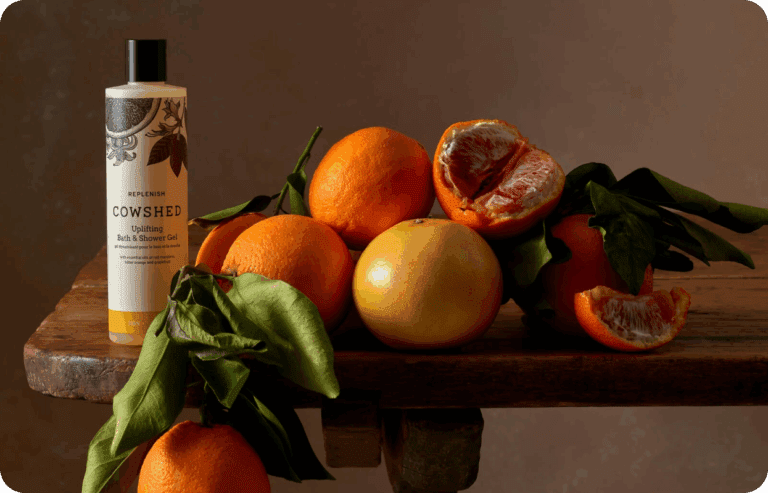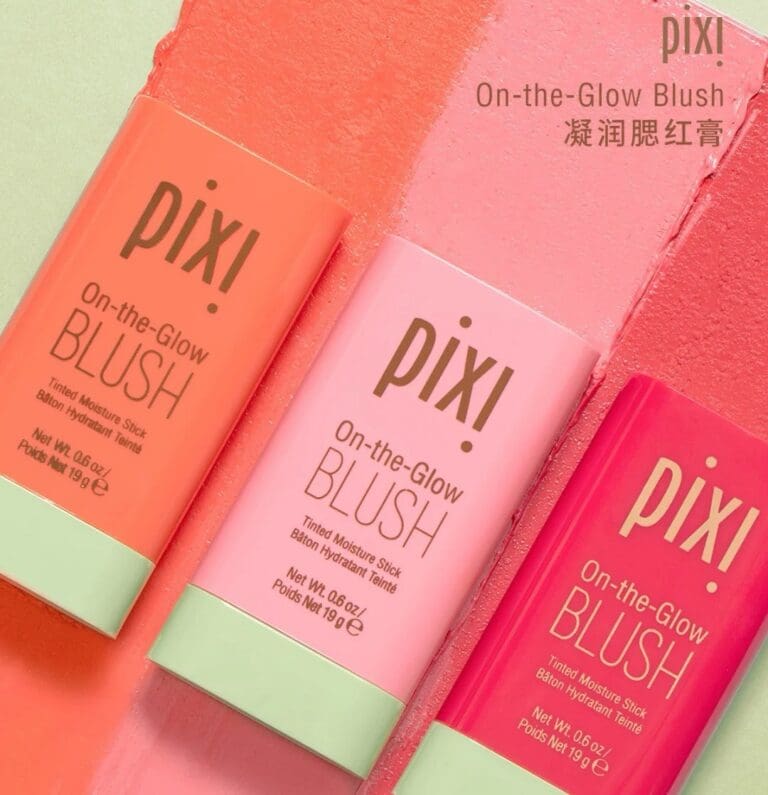
In this fourth edition, we take a dive into another one of the key sectors in China producing huge growth numbers: Mass Fragrance.
What is Mass Fragrance?
Of all the categories in our mini-series, this one is perhaps the least arduous to define. Put simply, mass fragrance products are those comprised of a mix of essential oils, aroma compounds and solvents, typically in liquid form, which give the human body and rooms a particular scent. The most common examples are the perfumes that we wear everyday, but it could also include home fragrance products.
The Global Market
In 2022, the global perfume market was worth $50.85 billion. Between 2023 to 2030, the market is expected to register a compound annual growth rate (CAGR) of 5.9% (more on how this compares to the Chinese market below).
Mass Fragrance in China
A Brief History
Fragrance has a long history in China. During the Han Dynasty (202 BC-220 AD), incense was used for healing and meditation purposes. Ingredients typically included flowers, balsam and other fragrant plants. The creation of aromas then became a popular pastime among China’s ruling elites and nobles.
Fragrant traditional Chinese medicines were created to improve health and ward off illness, as it was long believed that certain fragrances had the power to bring fortune and good luck. In. recent times, the production and application of perfume has been more commonly associated with Western countries such as France and Italy. Yet today, fragrance and perfumes are making a return in China, gradually becoming a mainstay among Chinese consumers.

The Chinese Mass Fragrance Market
In 2022, China recorded 17 billion RMB ($2.5 billion) in fragrance sales. By 2025, that figure is forecast by many to almost double to 30 billion RMB ($4.3 billion). By 2025, China will become the world’s second largest luxury perfume market. Even home fragrances are becoming must-have accessories for Chinese consumers, with this market expected to exceed $4 billion by 2025. The Chinese fragrance market’s CAGR is expected to hover between 17% and 22%, significantly higher than the global market (5.9-7%).
Between 2019-2022, China’s fragrance market experienced 60.6% year-on-year growth. In the 5 years preceding 2021, China’s fragrance market expanded at a compound annual growth rate (CAGR) of 21.4%, 10 times the global market growth during the same period. Perfume imports into China are also on the rise, increasing from $262 million in 2017, to $1.17 billion in 2022. Europe contributes over 90% of the perfume imports to China, with France accounting for over half of this.
China usually makes up a large chunk of any global consumer market, however, not in the case of the global fragrance market. Fragrance sales in China only account for roughly 4-5% of the world’s perfume market. At least for now, China’s perfume market remains relatively undeveloped. As a result, the Chinese market has the potential to become a real driver of the global perfume market’s development and growth.
The increasing adoration for fragrances is fuelling the market’s growth. Rising fragrance sales in China demonstrate increasing demands from consumers for scented products. This suggests that China will soon occupy a much greater ratio of the international fragrance market. Brands will need to react quickly to these industry changes and adapt their strategies.

The Key Opportunity and Trends in China
In China, perfumes have long been perceived as a non-essential commodity, and thus consumer awareness of fragrance based products remains in its infancy. Compared to China’s massive beauty and skincare markets, the fragrance sector remains relatively niche. Yet, this provides brands with a much less crowded field and gives consumers new and exciting products to look forward to.
Ingredients are an important consideration for Chinese consumers when it comes to fragrances. Mintel research found that natural ingredients (66%) were a more important buying factor than long-lasting fragrance (59%) and fragrance notes (50%). Euromonitor International found that Chinese consumers typically have a preference for woody, maritime and herbal notes in their fragrances.
Evolving tastes for fragrances provides brands with useful intel to experiment with new scents in order to cater for local consumers. It also means that fragrance brands may need to regularly reinvent or rebrand themselves to stay relevant.

China’s perfume industry is enjoying rapid growth, with established players, niche brands, home fragrances and even local Chinese brands leading the way. The market is attracting many international and domestic players.
And it is not just established brands that are performing well in the Chinese fragrance market. A 2023 report by KPMG found that some Chinese consumers were concerned about big brands being devalued, causing them to look for more unique and niche brands.
Therefore, smaller brands are now directly competing with big established names in the Chinese fragrance market. Innovative perfume retail is flourishing, with brands finding new ways of marketing their products online and ramping up omni-channel sales. Online channels have become the primary medium for Chinese consumers looking to purchase perfumes. Research from Mintel has shown that up to 70% of urban Chinese consumers have purchased fragrance products on online ecommerce shopping websites.
On Xiaohongshu, 60.8% of consumers use the platform as their main source for learning more about perfumes and relevant brands.
A popular online account on Weibo and Xiaohongshu called ‘Perfume World of CC’, providers consumers with a key hub for perfume reviews and discussions.

As is often the case, China’s Gen Z consumers are driving the fragrance market’s boom. A report found that over half of Gen Zs were wearing scents on a daily basis; this is only expected to continue to increase.
International Fragrance in China
One of the first international perfume brands to enter the Chinese market was L’Oréal-owned high-end perfumer Atelier Cologne. It opened the Maison de perfume flagship store in Shanghai, on June 22nd 2017.

The fragrance market in China has since been dominated by household names such as L’Oréal, Estée Lauder, LVMH, Channel, Mary Kay, Burberry, Salvatore Ferragamo and Avon. In fact, last year, the aforementioned brands made up 48.8% of China’s entire perfume market. Through brand reputation and strong investment, these major foreign brands occupy a strong online and physical presence in China.
Despite the dominance of big name beauty and fragrance brands, niche perfumes have started to perform increasingly well. The Covid-19 pandemic accelerated the presence of niche brands on China’s ecommerce platforms. Brands such as Penhaligon’s, L’Artisan Parfumeur, MEMO PARIS, CREED, Serge Lutens, ACCA KAPPA, Replica, have all found success in China. There is even a dedicated online ecommerce platform for niche perfumes – Minorité. Niche perfume brands have enjoyed as much as three digit year-on-year growth, as well as doubling in sales during 2020 and 2021.
Niche brands have adopted innovative methods to attract Chinese consumers. Diptyque accompanied in-store events with fragrant ice-cream flavours and Jo Malone partnered with local hotels in China to serve afternoon tea. Jo Malone has gained around 5 million followers on Tmall and 125,000 on Xiaohongshu. The company’s online revenue on Tmall exceeds $150 million (this doesn’t even include its brick-and-mortar stores).

International fragrance brands have also taken to localising some of their products. Armani introduced Thé Yulong, which combines black and green tea extracts taking users on a journey through China’s Yulong Mountains. Similarly, Bulgari’s Pour Homme, with its tea note, has become one of the top-selling men’s fragrances on Tmall. The aforementioned Dipytque is also investing in scents that pay homage to local Chinese culture. Its Pekin candle has notes of green tea and magnolia, with inspiration drawn from Beijing’s imperial temples. The company also released a Shanghai candle, using green tea and osmanthus, whilst its packaging paid homage to historical Chinese designs. Localised international fragrance products have found good success among Chinese Gen Z consumers.

Domestic Fragrance Brands
It is not only international fragrance brands that are making inroads in the Chinese market. Domestic competitors are fast emerging. A growing taste for distinctly Chinese products has given domestic players an advantage to leverage their Chinese heritage to connect with consumers. Local fragrance brands are harnessing traditional narratives and styles into their packaging, adding to the diversity of the perfume market.
One Chinese fragrance brand that has found success is Documents (闻献). The company initially gained attention after L’Oréal took a minority stake in Documents, investing over $1.4 billion. Documents gained popularity among consumers for its signature oriental aesthetics, despite being considered one of the more expensive Chinese perfume brands. It uses lots of Chinese ingredients like yulan magnolia,, star anise, mug wood and walnuts.

Another Chinese fragrance brand that has gained traction recently is To Summer (观夏). The company produces plant-based fragrances and fuses a blend of modern fragrance with historical and traditional Chinese culture. The inspiration for each product is centred around Eastern botanic smells. For example, the Four Seasons Mood Aroma represents the Chinese four seasons through its traditional floral design and seasonal names, e.g., ‘Spring Magnolia,’ ‘Autumn Osmanthus,’ etc. To Summer has nearly 170,000 followers on Xiaohongshu, and well over 1 million WeChat subscribers. Even more impressively, its repurchase rate hovers around 60%, demonstrating significant loyalty among its customers.
Finally, Scent Library(气味图书馆) has also strived to leverage nostalgic Chinese aspects of smell. One of its most popular products is the LBK perfume (凉白开), which translates to ‘chilled boiled water.’ The name pays homage to the childhood memories of consumers, when families boiled cold water in aluminium pots in order to drink.

Domestic Chinese fragrance brands have expanded their reach significantly in the fragrance market. Localised strategies have provided some brands with a distinct edge in the fragrance market. It can be difficult for foreign brands to crack the China perfume market if they fail to connect with local consumers. This doesn’t necessarily have to only be achieved by localising products, but creating a dedicated product line for the Chinese market can definitely help.



